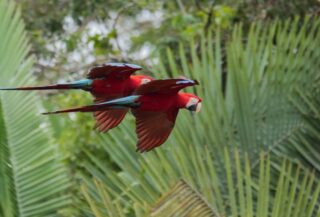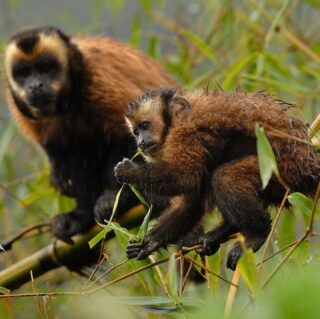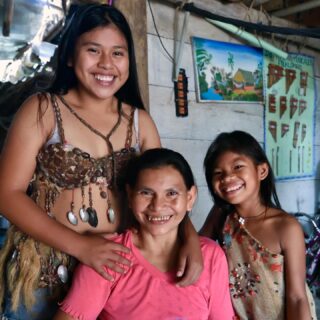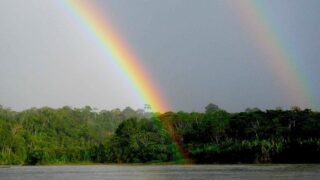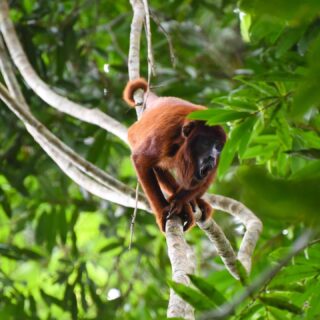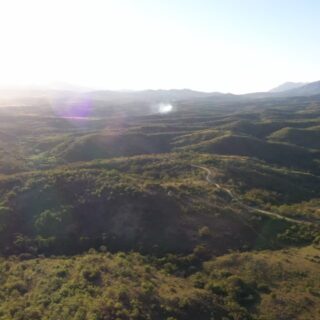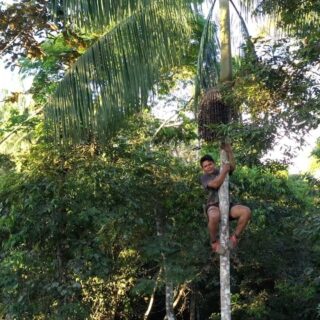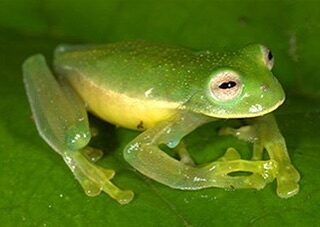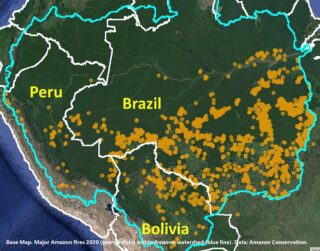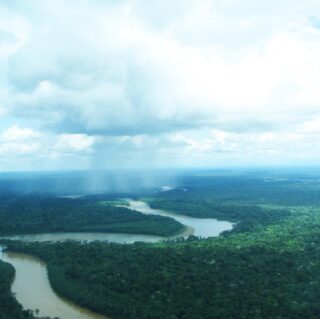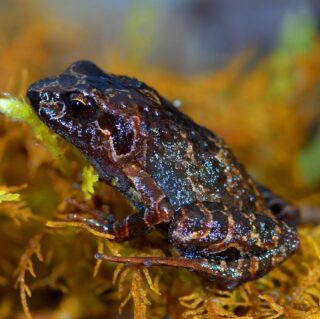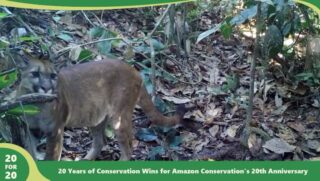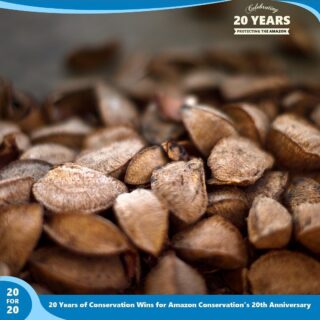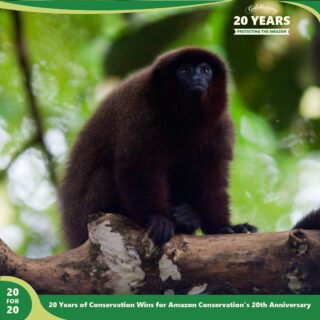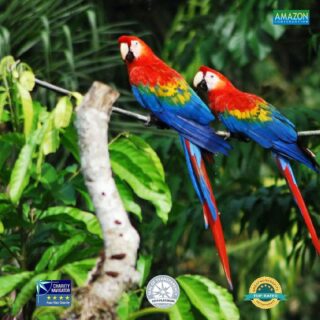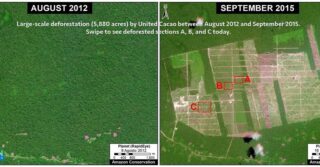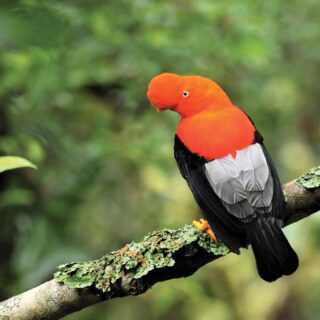 Article contributed by Connie and Peter Roop, participants on ACA’s 2012 Birdathon and authors of over 100 children’s books including their most recent titles, Tales of Famous Animals and Penguins are Cool!]
Article contributed by Connie and Peter Roop, participants on ACA’s 2012 Birdathon and authors of over 100 children’s books including their most recent titles, Tales of Famous Animals and Penguins are Cool!]
“Andean Gull!” Eric cried as he exited the Cusco airport. Amazon Conservation Association’s (ACA) Birdathon had just taken flight.
A mixed flock of Wisconsin, Michigan, Texas, and California birders, from fledgling to expert, arrived in Peru for a ten-day birding adventure, traveling from the dramatic Peruvian 11,000-foot highlands to the lush Amazon lowlands.
“Never go anywhere without your binoculars,” warns group leader, Craig Thompson.
At dawn, sleepy-eyed birders don their binoculars to peer into the brush for a glimpse of an elusive Rufous-tailed Antwren.
“Is that colorful, long-tailed hummingbird a Long-tailed Sylph?” asks a “binoculared” birder at breakfast.
 Cameras clicked as a sleek and swift Tayra, a South American weasel, stole to the same feeder to grab mouthfuls of a Red-Capped Cardinal’s bananas.
Cameras clicked as a sleek and swift Tayra, a South American weasel, stole to the same feeder to grab mouthfuls of a Red-Capped Cardinal’s bananas.
“Look at that soaring Black-and-White Hawk-Eagle!” cries a trip member as others drop their sandwiches to grab binoculars at lunch.
Even after the sun sets, these dedicated travelers have birds on their brains and are out trying to spot owls.
Rewards are handsome for both participants and the Amazon Conservation Association. Each day birders could count on seeing a rainbow of colorful birds, butterflies, and flowers.
Each evening at science research stations, they shared local food and learned from scientists conducting projects in these biologically rich and diverse habitats. These avid birders spotted 400 birds and heard 22 more with the assistance of Peruvian expert guides, Alex and Percy. These efforts raised $34,000 for ACA to protect bird habitat in the region.
 Thompson’s two trips have this mission: to create flocks of birders devoted to protecting biological hot spots in Peru’s Amazon Basin and in Costa Rica’s pristine Osa Peninsula. Since 1992, Craig has used his vacation time to gather friends of feathers together to personally experience tropical rainforests.
Thompson’s two trips have this mission: to create flocks of birders devoted to protecting biological hot spots in Peru’s Amazon Basin and in Costa Rica’s pristine Osa Peninsula. Since 1992, Craig has used his vacation time to gather friends of feathers together to personally experience tropical rainforests.
Each “Thompson traveler” donates $500 to the Amazon Conservation Association or Osa Conservation. The cost of the trip is low. In the past six years, Thompson’s groups have donated over $100,000 to conservation efforts.
“Protection of Wisconsin birds’ breeding habitats is only half the conservation story,” explains Thompson, whose day job is at the Wisconsin Department of Natural Resources.
“The other half is in Latin American countries like Costa Rica. Without protection of migratory bird winter habitat in Latin America, our Wisconsin woodlands and backyards will become increasingly silent in the spring and summer,” Thompson warns.
Tropical forests on Costa Rica’s Osa Peninsula are the winter home to 55 species that breed in Wisconsin. These include Peregrine Falcons and Worm-eating warblers, both of which are state-endangered as well as state-threatened Acadian flycatchers, Kentucky warblers, and Hooded warblers.
 Taking a trip to the Osa Peninsula or to Peru links Wisconsin and Michigan citizens and our avian denizens to our southern neighbors. Projects supported include monitoring over-wintering survival of Wisconsin birds in tropical forests, purchasing property to enable construction of a field station and ecolodge, and cloud forest and dry forest protection and restoration. Investing in these projects has brought incalculable returns to “our” Midwest birds who migrate to Latin America each winter and return to us to breed in the Midwest each summer.
Taking a trip to the Osa Peninsula or to Peru links Wisconsin and Michigan citizens and our avian denizens to our southern neighbors. Projects supported include monitoring over-wintering survival of Wisconsin birds in tropical forests, purchasing property to enable construction of a field station and ecolodge, and cloud forest and dry forest protection and restoration. Investing in these projects has brought incalculable returns to “our” Midwest birds who migrate to Latin America each winter and return to us to breed in the Midwest each summer.
“Turkey vulture!” points out Peter as the newly-made friends say good-bye at the Cusco airport.
Bird by bird, birder by birder, interested citizens have two amazing rain forest trips to crow about. Each provides a unique opportunity to experience the rain forest, to make new “best” birding buddies, and to support conservation critical to Midwest and rain forest species.
If you would like to learn more about the Wisconsin Bird Conservation Initiative’s International Programs, please visit http://www.wisconsinbirds.org/International. To find out more about Thompson’s trips or make a donation, please visit https://www.amazonconservation.org/getinvolved/birdathon for Amazon Conservation Association or http://www.osaconservation.org/get-involved/conservation-trips for Osa Conservation. Interested in joining a future expedition to Peru? If so, email info@amazonconservation.org. (Photos and text from Peter and Connie Roop)
 Sadly, the gray woolly monkey pictured is endangered.
Sadly, the gray woolly monkey pictured is endangered. Pilcomayo—children of loggers who moved near Manu’s Andean slope decades ago—to create a new 12,040-acre conservation concession.
Pilcomayo—children of loggers who moved near Manu’s Andean slope decades ago—to create a new 12,040-acre conservation concession.
 Today ACA’s
Today ACA’s  In just three years, Villa Carmen has established itself as a bustling hub for scientists and conservationists. Over 150 researchers have visited the station from institutions around the world, cataloguing more than 590 species of plants and animals, and leading 38 research projects to date, studying everything from native fish and
In just three years, Villa Carmen has established itself as a bustling hub for scientists and conservationists. Over 150 researchers have visited the station from institutions around the world, cataloguing more than 590 species of plants and animals, and leading 38 research projects to date, studying everything from native fish and  Villa Carmen is also a living laboratory for best practices in sustainable agriculture, and shares lessons learned with residents from surrounding communities. Villa Carmen grows its own local organic crops, while researchers study ways to enhance soil fertility using biochar. Last year, Villa Carmen hosted an international workshop on sustainable agriculture where world experts and local Amazonian farmers shared techniques and experiences.
Villa Carmen is also a living laboratory for best practices in sustainable agriculture, and shares lessons learned with residents from surrounding communities. Villa Carmen grows its own local organic crops, while researchers study ways to enhance soil fertility using biochar. Last year, Villa Carmen hosted an international workshop on sustainable agriculture where world experts and local Amazonian farmers shared techniques and experiences. Villa Carmen’s
Villa Carmen’s  Innovations in Biochar
Innovations in Biochar Around ACA’s
Around ACA’s 
 Article contributed by
Article contributed by  Cameras clicked as a sleek and swift Tayra, a South American weasel, stole to the same feeder to grab mouthfuls of a Red-Capped Cardinal’s bananas.
Cameras clicked as a sleek and swift Tayra, a South American weasel, stole to the same feeder to grab mouthfuls of a Red-Capped Cardinal’s bananas. Thompson’s two trips have this mission: to create flocks of birders devoted to protecting biological hot spots in Peru’s Amazon Basin and in Costa Rica’s pristine Osa Peninsula. Since 1992, Craig has used his vacation time to gather friends of feathers together to personally experience tropical rainforests.
Thompson’s two trips have this mission: to create flocks of birders devoted to protecting biological hot spots in Peru’s Amazon Basin and in Costa Rica’s pristine Osa Peninsula. Since 1992, Craig has used his vacation time to gather friends of feathers together to personally experience tropical rainforests. Taking a trip to the Osa Peninsula or to Peru links Wisconsin and Michigan citizens and our avian denizens to our southern neighbors. Projects supported include monitoring over-wintering survival of Wisconsin birds in tropical forests, purchasing property to enable construction of a field station and ecolodge, and cloud forest and dry forest protection and restoration. Investing in these projects has brought incalculable returns to “our” Midwest birds who migrate to Latin America each winter and return to us to breed in the Midwest each summer.
Taking a trip to the Osa Peninsula or to Peru links Wisconsin and Michigan citizens and our avian denizens to our southern neighbors. Projects supported include monitoring over-wintering survival of Wisconsin birds in tropical forests, purchasing property to enable construction of a field station and ecolodge, and cloud forest and dry forest protection and restoration. Investing in these projects has brought incalculable returns to “our” Midwest birds who migrate to Latin America each winter and return to us to breed in the Midwest each summer. This past December, ACA was awarded a grant of nearly $1 million by the
This past December, ACA was awarded a grant of nearly $1 million by the  On a Sunday morning hike this February, ACA Science Director
On a Sunday morning hike this February, ACA Science Director  With the
With the  Third, we use scientific analysis to underpin our strategies and solutions. We’ve measured the mercury content in numerous fish species to educate the public on health hazards. We’ve studied the impact of unmanaged livestock on cloud forest regeneration. We’ve meticulously mapped out hundreds of Brazil nut trees and other keystone species to create management plans to protect these resources and the surrounding forests. We’re testing
Third, we use scientific analysis to underpin our strategies and solutions. We’ve measured the mercury content in numerous fish species to educate the public on health hazards. We’ve studied the impact of unmanaged livestock on cloud forest regeneration. We’ve meticulously mapped out hundreds of Brazil nut trees and other keystone species to create management plans to protect these resources and the surrounding forests. We’re testing  From August 19 to 29, the Amazon Conservation Association (ACA) hosted its second annual
From August 19 to 29, the Amazon Conservation Association (ACA) hosted its second annual  On June 4, 2012, Peru’s first trust fund for a conservation concession was officially created to protect and conserve the
On June 4, 2012, Peru’s first trust fund for a conservation concession was officially created to protect and conserve the  general director of forestry and wildlife at Peru’s Ministry of Agriculture, spoke in appreciation of the fund, stating that “this is a great accomplishment for the Ministry of Agriculture to have a concession – in this case, Los Amigos – obtain a trust fund that provides a long-term horizon for the development of activities. This experience is a first for conservation concessions, and I believe it is a symbol of good things to come in the future.”
general director of forestry and wildlife at Peru’s Ministry of Agriculture, spoke in appreciation of the fund, stating that “this is a great accomplishment for the Ministry of Agriculture to have a concession – in this case, Los Amigos – obtain a trust fund that provides a long-term horizon for the development of activities. This experience is a first for conservation concessions, and I believe it is a symbol of good things to come in the future.” Anne Lambert, managing director of the ICFC, spoke of the important role the LACC plays in the research and conservation of the region, and about how institutional strengthening of conservation organizations is crucial for ensuring sustained environmental protection. The trust fund will provide the financial resources needed by ACA and ACCA to vigilantly and efficiently protect the LACC from illegal logging, mining, and other threats.
Anne Lambert, managing director of the ICFC, spoke of the important role the LACC plays in the research and conservation of the region, and about how institutional strengthening of conservation organizations is crucial for ensuring sustained environmental protection. The trust fund will provide the financial resources needed by ACA and ACCA to vigilantly and efficiently protect the LACC from illegal logging, mining, and other threats.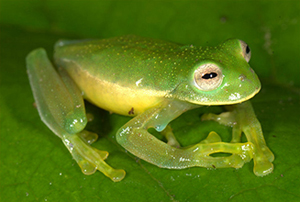 The
The 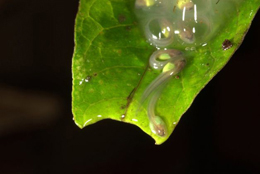
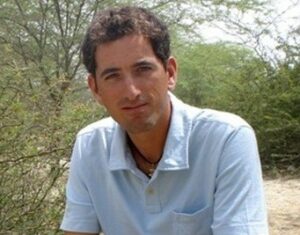 The team was led by Wayqecha’s research coordinator Alessandro Catenazzi (pictured here) of San Francisco State University. Catenazzi has studied frog populations in and around the Wayqecha Biological Station for over a decade, documenting the decline in frog diversity and populations. A 40 percent loss of frog diversity over the last decade has been documented in the cloud forests around Wayqecha, with aquatic-breeding frogs experiencing the greatest decline. While following patterns of biodiversity loss worldwide, in this instance the decline of glass frogs is likely caused by the recent expansion of the chytrid fungus into the area.
The team was led by Wayqecha’s research coordinator Alessandro Catenazzi (pictured here) of San Francisco State University. Catenazzi has studied frog populations in and around the Wayqecha Biological Station for over a decade, documenting the decline in frog diversity and populations. A 40 percent loss of frog diversity over the last decade has been documented in the cloud forests around Wayqecha, with aquatic-breeding frogs experiencing the greatest decline. While following patterns of biodiversity loss worldwide, in this instance the decline of glass frogs is likely caused by the recent expansion of the chytrid fungus into the area.